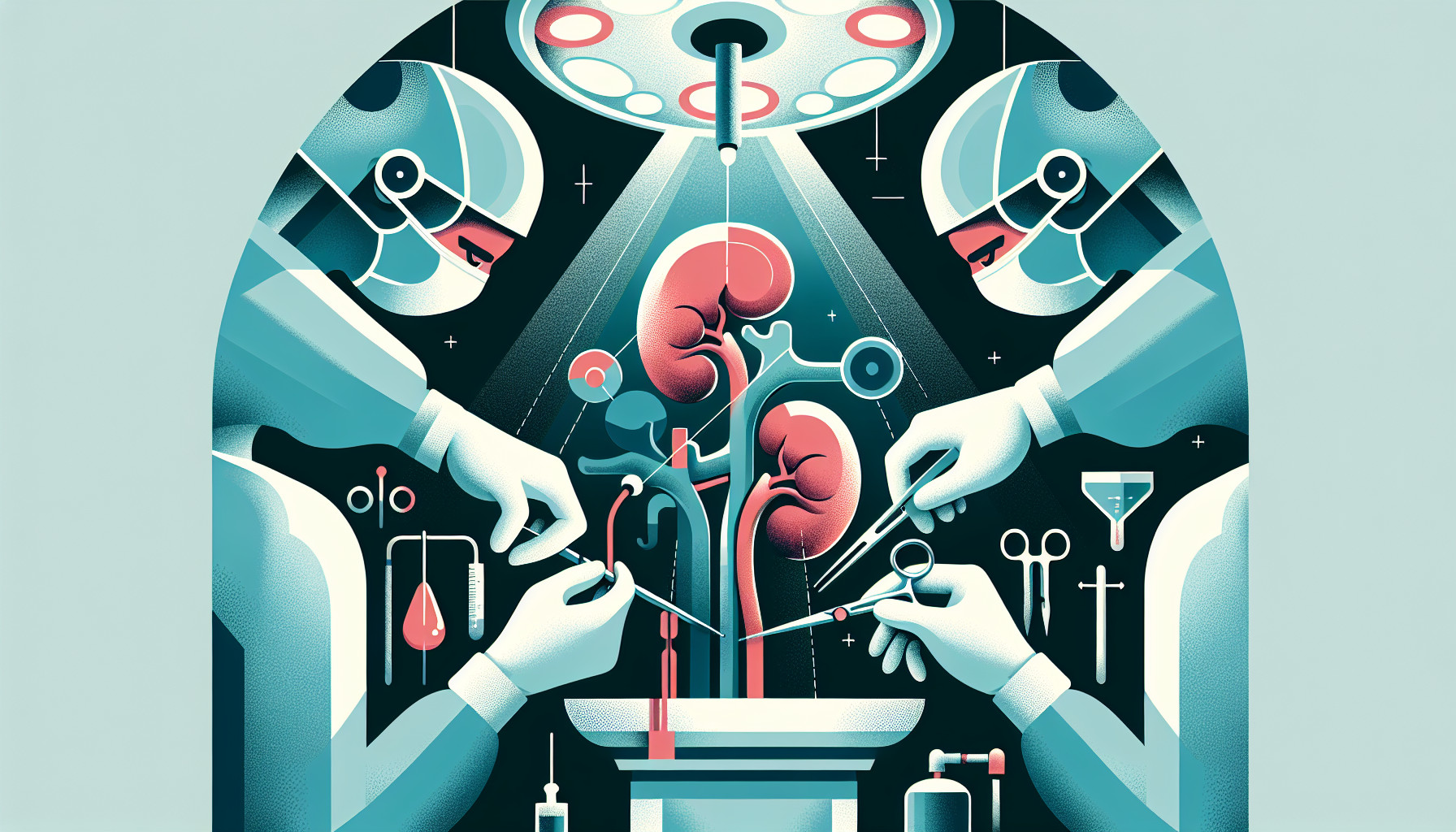Our Summary
This research paper compares two methods of kidney donation surgery: the traditional “open” method and a newer, minimally invasive method called hand-assisted laparoscopic living donor nephrectomy. In comparing these two techniques, the researchers looked at things like early kidney function, amount of blood loss, length of surgery, and patient satisfaction.
The results showed no significant difference in several areas, including warm ischemia time - the period during which the kidney is without blood supply during surgery. However, there were some significant differences in favor of the hand-assisted laparoscopic method when it came to levels of creatinine and urea in the blood after surgery. These substances are often used to measure kidney function, and lower levels suggest better kidney function.
In conclusion, the researchers found that the hand-assisted laparoscopic method is safe and effective. Given the benefits of minimally invasive surgery and the positive results seen in this study, they recommend this method for kidney donation. The primary goals are to ensure the best possible kidney for the recipient and to keep the donor safe.
FAQs
- How do the traditional “open” method and hand-assisted laparoscopic living donor nephrectomy compare in terms of patient outcomes?
- What are the levels of creatinine and urea in the blood after surgery, and what do they indicate about kidney function?
- Why do the researchers recommend the hand-assisted laparoscopic method for kidney donation?
Doctor’s Tip
One helpful tip a doctor might give a patient about laparoscopic nephrectomy is to follow their post-operative care instructions carefully. This may include things like taking prescribed medications, avoiding heavy lifting or strenuous activity for a certain period of time, and attending follow-up appointments as scheduled. By following these instructions, patients can help ensure a successful recovery and minimize the risk of complications.
Suitable For
Laparoscopic nephrectomy is typically recommended for patients who are healthy enough to undergo surgery and have a suitable kidney for donation. This minimally invasive method is less invasive than traditional open surgery, resulting in less pain, shorter hospital stays, and faster recovery times. Patients with conditions such as kidney cancer, kidney stones, or kidney failure may also be candidates for laparoscopic nephrectomy. Additionally, patients who are considering living kidney donation may be recommended this procedure as it offers excellent outcomes with minimal risks. Overall, laparoscopic nephrectomy is a safe and effective option for a variety of patients in need of kidney surgery.
Timeline
Timeline:
Before laparoscopic nephrectomy:
- Patient undergoes a series of tests to determine if they are a suitable candidate for kidney donation
- Patient meets with healthcare providers to discuss the procedure, risks, and benefits
- Patient undergoes pre-operative evaluations and prepares for surgery
During laparoscopic nephrectomy:
- Patient is given anesthesia and the surgeon makes small incisions in the abdomen
- Surgeon inserts a laparoscope and other surgical tools to remove the kidney
- Surgery typically takes 2-3 hours
- After surgery, patient is monitored in the recovery room before being transferred to a hospital room
After laparoscopic nephrectomy:
- Patient may experience pain, discomfort, and fatigue in the days following surgery
- Patient is encouraged to walk and move around to aid in recovery
- Patient will have follow-up appointments with healthcare providers to monitor kidney function and overall health
- Patient may be able to return to normal activities within a few weeks, depending on individual recovery
Overall, laparoscopic nephrectomy offers a less invasive option for kidney donation with potentially faster recovery times and improved kidney function compared to traditional open surgery.
What to Ask Your Doctor
Some questions a patient should ask their doctor about laparoscopic nephrectomy include:
- What are the potential risks and complications associated with laparoscopic nephrectomy?
- How long is the recovery period after laparoscopic nephrectomy?
- How does the hand-assisted laparoscopic method compare to the traditional “open” method in terms of outcomes?
- What is the success rate of laparoscopic nephrectomy in terms of kidney function post-surgery?
- How experienced is the surgical team in performing laparoscopic nephrectomy procedures?
- What is the expected length of the surgery for laparoscopic nephrectomy?
- Will there be any long-term effects on kidney function or overall health after undergoing laparoscopic nephrectomy?
- How soon after surgery can I resume normal activities and return to work?
- Are there any specific dietary or lifestyle changes I should make before or after laparoscopic nephrectomy?
- What additional support or resources are available for donors considering laparoscopic nephrectomy?
Reference
Authors: Gavrilovska-Brzanov A, Stavridis S, Dohchev S, Mijovska MM, Petrusheva-Panovska A, Trifunovski A, Janculev J, Trajkovski D, Stankov V, Srceva MJ, Brzanov N. Journal: Pril (Makedon Akad Nauk Umet Odd Med Nauki). 2023 Jul 15;44(2):65-71. doi: 10.2478/prilozi-2023-0026. Print 2023 Jul 1. PMID: 37453116
